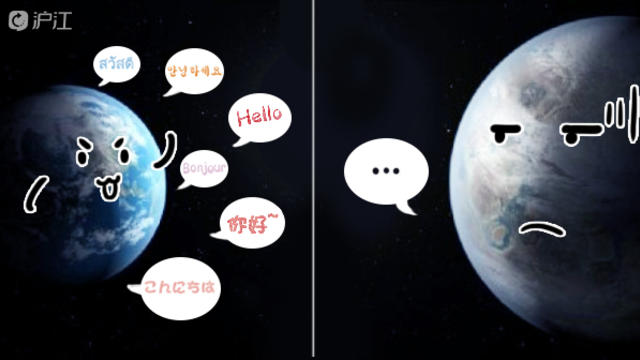英语四级暑期听力练习11
听力是四级考试中的重要题型,考生对这部分的复习一定不能松懈,考生可以充分利用暑期时间坚持练习听力,下面是一篇英语四级听力练习,快来练练吧。
Three-dimensional technology -- known as three-D -- gives depth to objects that would otherwise appear two-dimensional, or flat. Three-D makes movies and video games look more realistic. And now it could help save lives.
For years, mammograms have played an important role in finding breast cancer. But these X-ray pictures of the human breast often miss dangerous lumps or tumors.
And they also produce false positives. A false positive wrongly appears to show suspicious tissue. And that causes painful, unnecessary biopsies to examine that tissue.
A new study shows that three-D technology could change the way doctors look for breast cancer.
A woman undergoes a mammography exam, a special type of X-ray of the breasts used to detect tumors.
When Zulima Palacio discovered she had breast cancer, it already had reached stage three. That means that the cancer was very dangerous.
"Even a month before it was detected, I went for a sonogram and they told me, 'You're fine, go home.'"
Ms. Palacio is now cancer free. But the standard two-dimensional mammogram missed all three of her tumors.
Many doctors - including cancer surgeon Negar Golesorkhi - say standard mammography does not find enough cancerous tumors. She says looking for cancer in dense, thick breast tissue is like looking for a polar bear in a snow storm. In other words, it is very difficult.
"When we look for cancer on a mammogram in a dense breast tissue, we're looking for a polar bear in a snow storm, so it would be very difficult to find."
A few years ago, the U.S. Food and Drug Administration approved the use of three-D mammography. And three-D technology found Jennifer Hoeft's tumor.
"It was a very small tumor. It was only an 8 millimeter tumor that couldn't be felt."
Sarah Friedewald is a doctor at Lutheran General Hospital in the U.S. state of Illinois. She led a study to compare the results of three-D and two-D mammography from nearly a half million patients.
Dr. Friedewald says they found more cancers using three-D mammograms versus, or compared to, two-D mammograms. And they found more cancers that kill.
"We found invasive cancers or the cancers that we worry about, the ones that could potentially kill people more frequently in women who had the 3-D mammogram versus the women who just had the 2-D mammogram."
The White House in Washington is bathed in pink light to celebrate Breast Cancer Awareness Month.
Dr. Friedewald says tumors that are difficult to see on a standard mammogram are easy to find in 3 dimensions.
Jennifer Hoeft is grateful that she had three-D mammography.
"I truly, truly believe that the 3-D mammography is what caught my cancer early and is allowing me to pretty much live my life the way I want to."
全面掌握四六级考试信息,为备考复习做准备!
什么人能考四六级:全日制专科、本科、研究生在校生可报考四六级,其中英语四级考试成绩达到425分以上(含425分)的在校大学生才可报考六级,同一考试批次,四级和六级不能兼报。点击查看更多>>
四六级什么时候考:大学英语四六级考试每年举办两次,分别是6月中下旬的周六和12月中下旬的周六,具体时间每年略有不同,需查看本校教务处报名通知了解。点击查看最新考试时间>>
四六级在哪儿报名:英语四六级考试现在都由各学校组织报名,一般会通过学校的教务网站或者各学院集体报名,报名后还有信息确认的过程,部分学校需要电子摄像。点击查看更多>>
四六级报名费要多少:四六级报名费用由各院校在报名时收取,不同地区及院校收费标准不同,一般在15-70元不等,部分院校不设立现场交费,采取从校园卡或银行卡统一划扣方式收取。点击查看更多>>
四六级考试流程是怎样的:英语四六级是同一天考试,上午考四级,下午考六级。考场上先试音,然后进行作文部分答题,之后是听力部分考试,最后是剩余题型考试。点击查看更多>>
四六级分数怎么计算:大学英语四、六级考试的分数报道采用常模参照方式,不设及格线。四六级考试单项成绩有四个部分,这四个部分以及所占的分值比例为:听力占35%,阅读占35%,翻译占15%,作文占15%。点击查看更多>>
四六级考试改革了哪些:CET考委会宣布从2013年12月考次起对英语四六级考试题型改革。本次四六级考试改革取消了完形填空、快速阅读,增加阅读理解匹配题,复合式听写改为单词和词组听写,句子翻译改为短文汉译英。点击了解更多>>
四六级成绩什么时候出:四六级考试成绩一般是考后两个月左右公布,一般在成绩查询开始前10天左右,四六级考委会网站会公布成绩查询通知,告知大家确切的成绩查询开始时间及成绩查询方式。点击了解更多>>
四六级多少分过:四六级报道成绩满分为710分,凡成绩在220分以上的考生,发给成绩单,不设官方及格线。但考委会规定“四级成绩达到425分以上(含425分)者方可报考六级”,故一般认为四级及格线是425分。点击了解更多>>











